I made potstickers in 3 different appliances, and there's really only one way to do it right

I made frozen potstickers with my oven, stovetop, and microwave to find the best cooking method.
If I'm making a big batch, I think the oven probably makes the most sense.
But nothing came close to rivaling the hot, crispy pan-fried potstickers.
As of 2023, the global frozen-food industry was worth nearly $3 billion, and my family has certainly contributed to that. Frozen appetizers, meals, and sides are an easy way to get dinner on the table during the week.
One of our favorite frozen treats is potstickers, so I embarked on delicious hands-on testing to see if the flavorful dumplings are best when I use my oven, microwave, or stovetop.
Here's how the cooking methods stacked up.
If you're short on time, the microwave only takes five minutes.
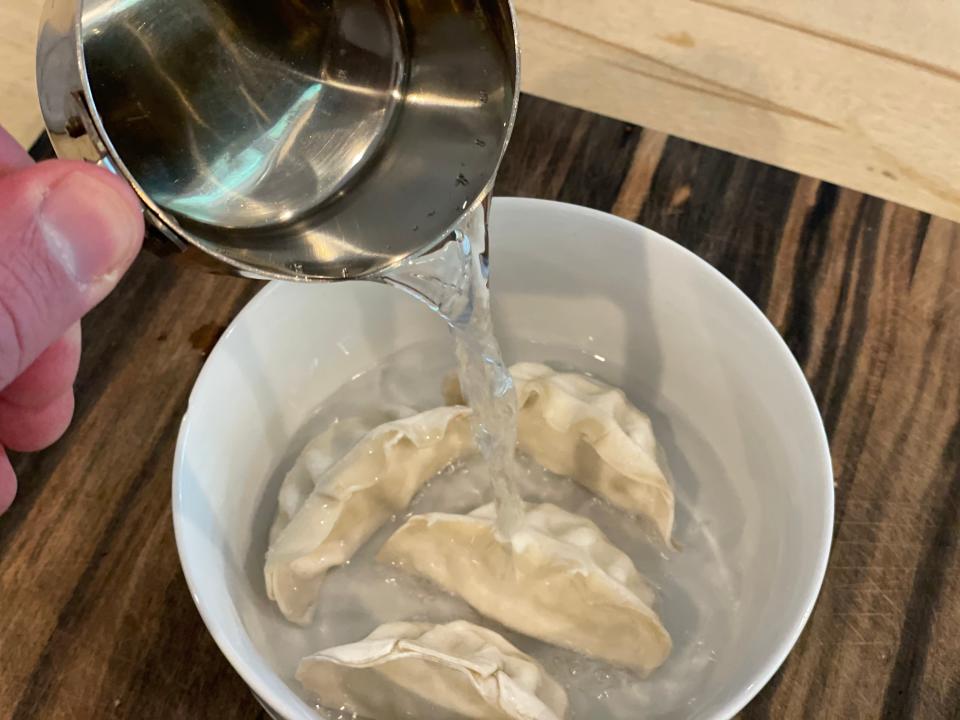
If you're hungry for dumplings and only have five minutes to spare, the microwave is likely your only option.
To cook the potstickers in the microwave, I placed four dumplings in a standard bowl and poured in a little less than a cup of room-temperature water on top. I then popped the bowl in the microwave for four minutes.
When the timer went off, I retrieved the bowl, poured off the remaining excess water, and transferred the potstickers to a plate.
The microwaved potstickers came out better than I expected — but still not great.
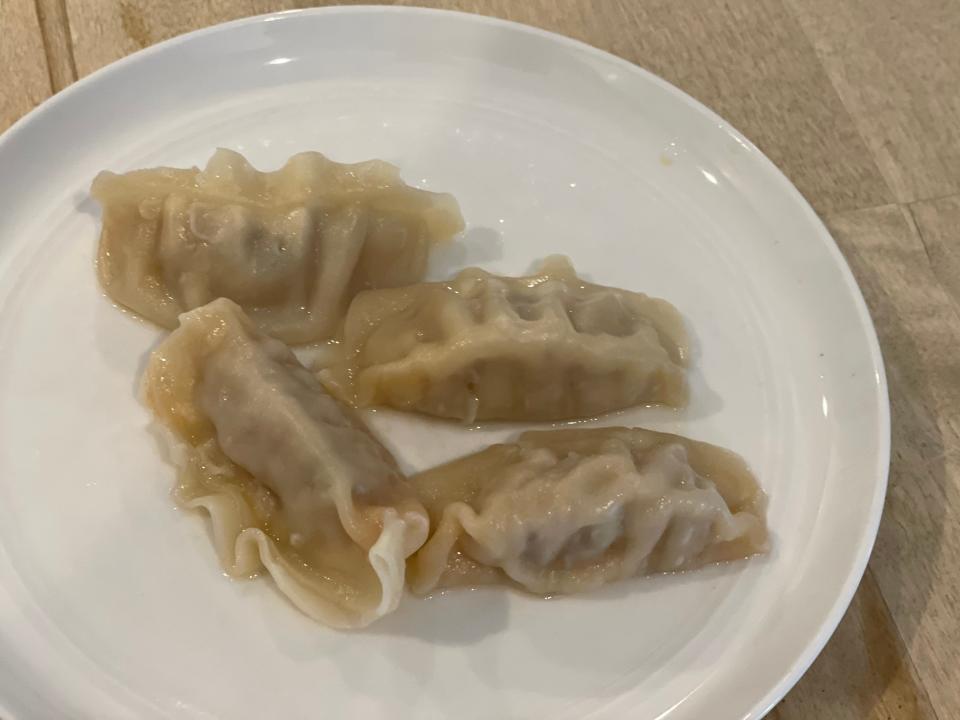
Straight out of the microwave, the potstickers looked … not great. I was met with a damp, rubbery-looking lineup of dumplings I can hardly describe as appetizing.
Nonetheless, I dutifully drizzled some of my beloved Bachan's Japanese barbecue sauce on top and popped a dumpling in my mouth.
Appearances aside, I was pleasantly surprised. They lacked the traditional seared bottoms that give potstickers their winning taste and texture, but they weren't as chewy as I'd feared. In fact, the dumplings had a pleasant firmness.
They were evenly warmed inside — almost too hot, really — making them entirely satisfactory.
Although the potstickers were hardly remarkable, I'd certainly use the microwave again if I was short on time.
Making potstickers in the oven allows me to cook large batches at once.
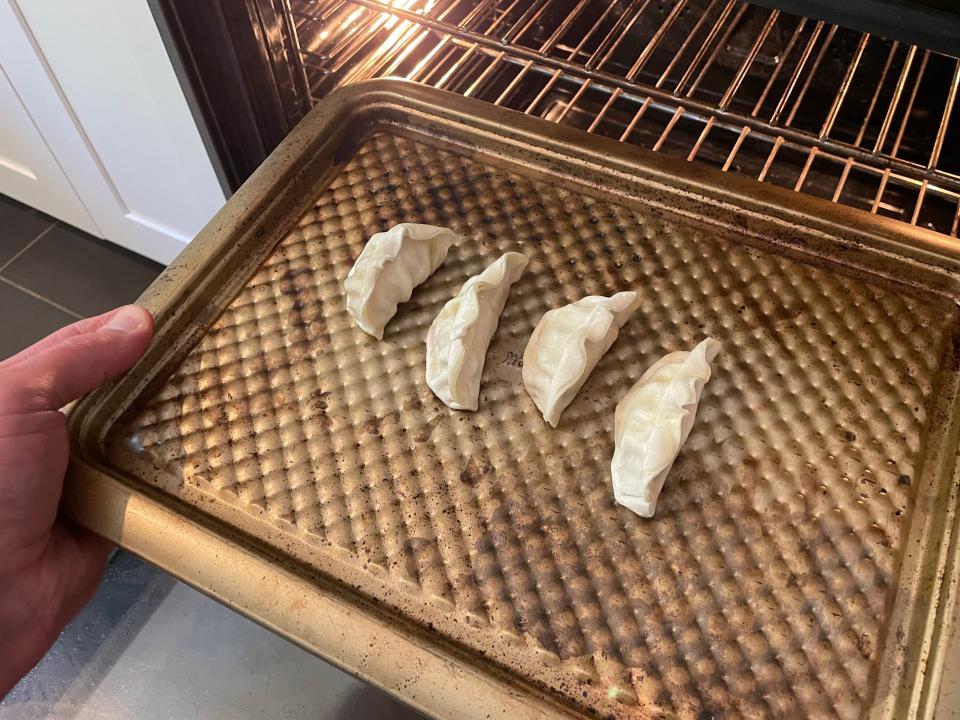
To make the potstickers in the oven, I first preheated it to 375 degrees Fahrenheit. Once the oven was hot, I thoroughly coated the dumplings in oil — I used a blend of avocado oil and sesame oil — and then lined them up, flat side down, on a baking sheet.
I baked the dumplings for 17 minutes (most recipes I found online called for 16 or 18). Right when my timer went off, I retrieved the potstickers and quickly got them off the baking sheet.
The finished dumplings were a little dry but still exceeded my expectations.
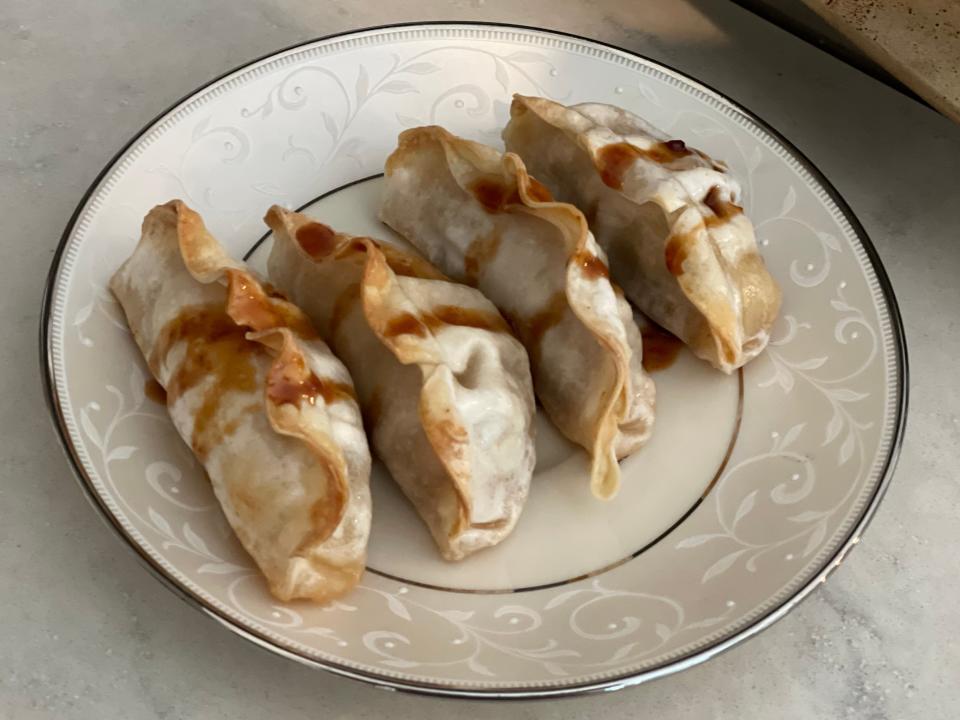
I figured the baked potstickers would be dry and tasteless, but I was happily proven wrong.
Although the ridge formed by the potsticker's seam was a bit dry and browned, the rest retained moisture. There was even a bit of a sear on the bottom.
I drizzled on the barbecue sauce and took a bite.
Aside from that dried-out strip along the top, the oven-baked potstickers were delicious. Plus, I could've cooked two dozen at once, making it ideal for preparing a large batch.
In the future, I'll briefly pull the dumplings out of the oven and mist or brush water over them at about the 12-minute mark to avoid any drying. But overall, I was impressed with how easy and effective this cooking method was.
I had high hopes for the stovetop method.
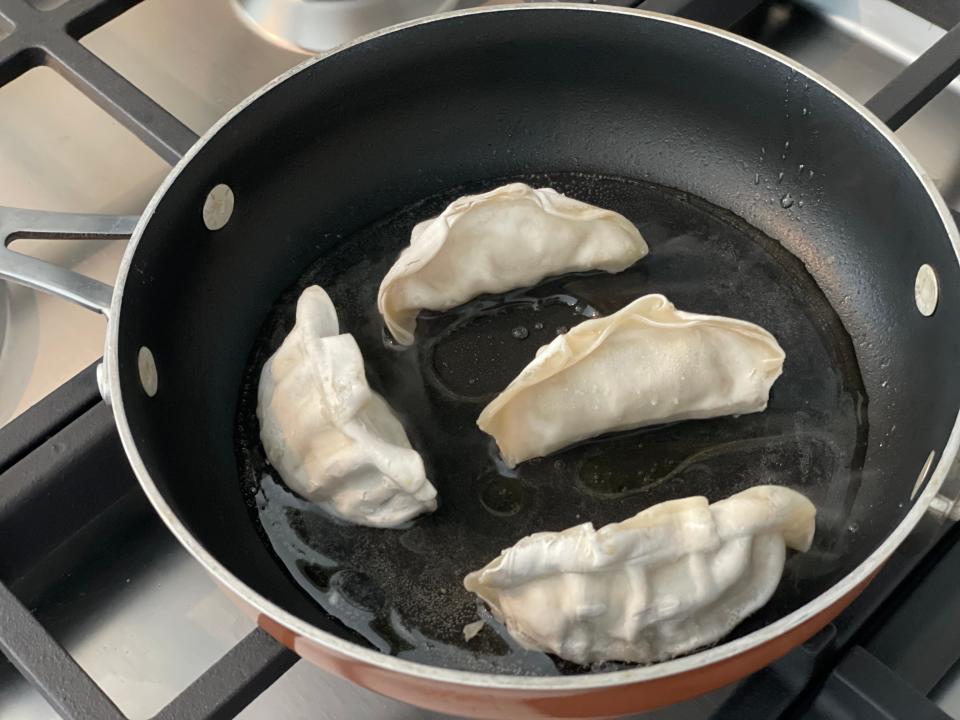
Potstickers get their name from the fact that they get fried in and stuck to a pan, so I was expecting the stovetop method to wow me.
To pan-fry my dumplings, I poured a generous tablespoon of avocado oil into a 10-inch pan and began to heat it over a medium flame.
Once the oil started simmering, I added the potstickers to the pan, flat side down, and poured about a quarter of a cup of water over them. Just make sure your oil isn't so hot that the water causes a flare-up.
I covered the pan and stood back for eight minutes. Then, I removed the lid and let the dumplings cook for two more minutes. I tried my best not to touch or move them much while they were cooking — it's best just to let the heat do its work.
After 10 minutes on the stove, I popped the pan-fried potstickers on a plate, drizzled some Bachan's sauce, and got to tasting.
The pan-fried dumplings were the clear winners.
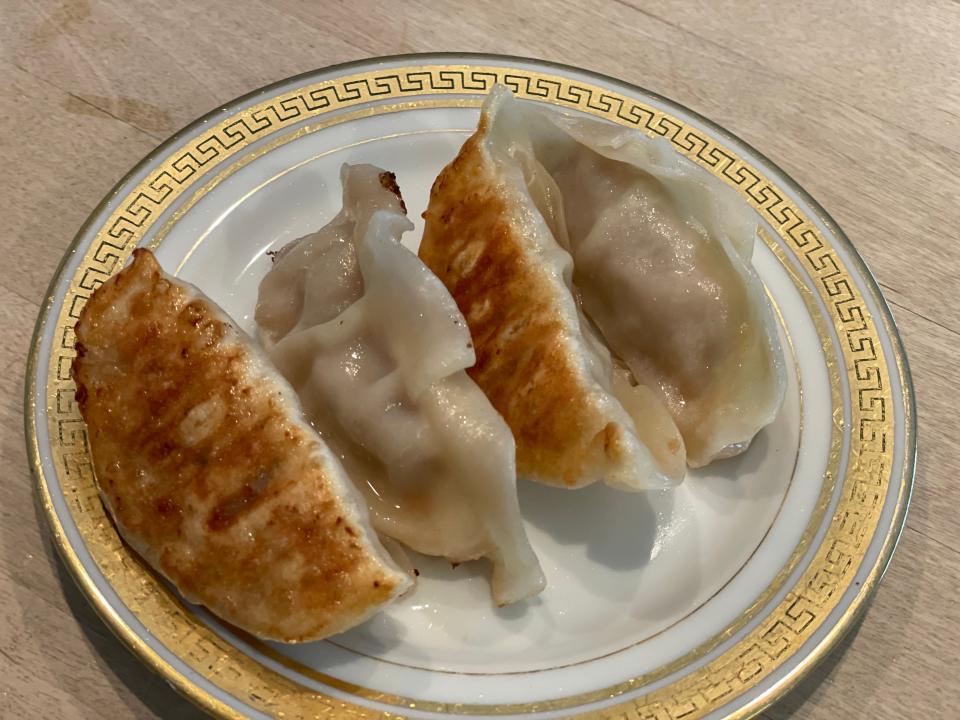
The pan-seared dumplings were perfect — they had a tender, almost crunchy bottom, were moist but far from soggy, and were heated through but not too hot to enjoy right away.
The sauce kind of sloughed off the wetter microwaved potstickers, but these dumplings embraced the drizzle, further improving the taste and appearance.
All three cooking methods have their place, but the pan is best when you have the time.
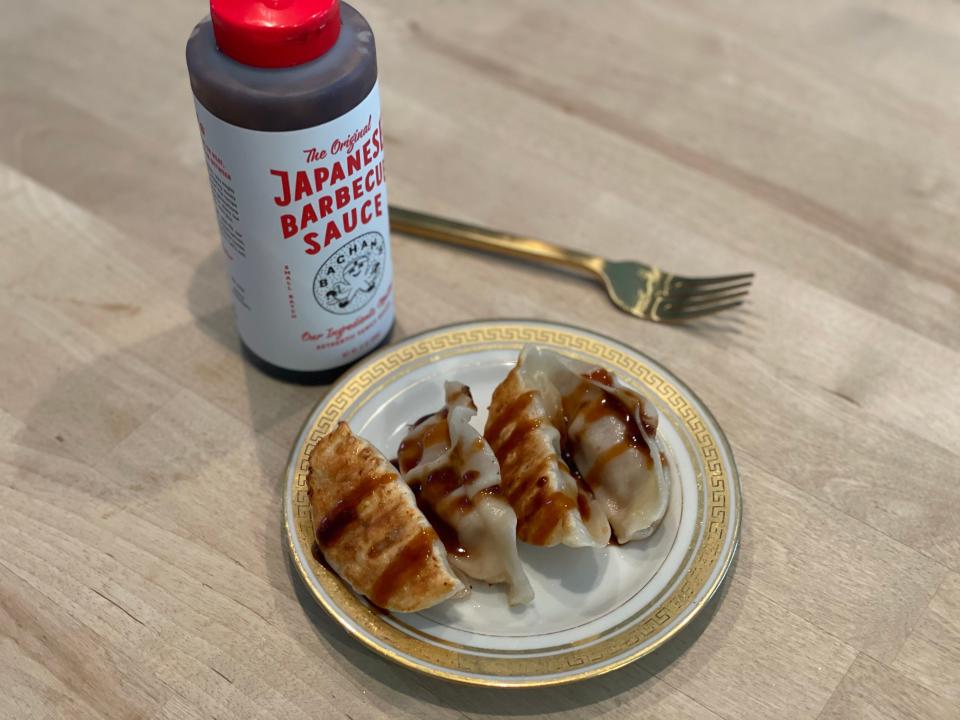
When timing or volume are issues, I'll certainly use my microwave and oven again.
But ultimately, the pan-fried approach is the best method for cooking frozen dumplings.
It only takes about 12 minutes, and the perfectly crispy results are delicious.
Click to check out the other appliances we've put head-to-head so far.
Read the original article on Business Insider

